Lecture 13 - Intro to Dosimetry & Gas Detectors
1/67
Earn XP
Description and Tags
ONCOL 243 - Radiation Safety. University of Alberta
Name | Mastery | Learn | Test | Matching | Spaced |
|---|
No study sessions yet.
68 Terms
why do we need radiation detectors
because radiation is invisible, we need it for dosimetry, calibrating machines, monitoring ourselves, and leakage surveys
What are the 4 types of detectors most frequently used
Gas filled detectors
scintillators
TLD & OSL
Semiconductors
how do gas detectors work
radiation ionizes gas, ions move in electric field, charge is collected and measured
how to scintillators work
radiation creates UV or visible light, light is detected
how do TLD and OSL detectors work
Thermoluminescent or optically stimulated luminescent materials store energy from radiation exposure, which is released as light when heated or stimulated, allowing for measurement.
how do semiconductor detectors work
diodes produce electrical pulses when ionizing radiation interacts with the semiconductor material, creating electron-hole pairs that are collected as a measurable current.
table of radiation detectors
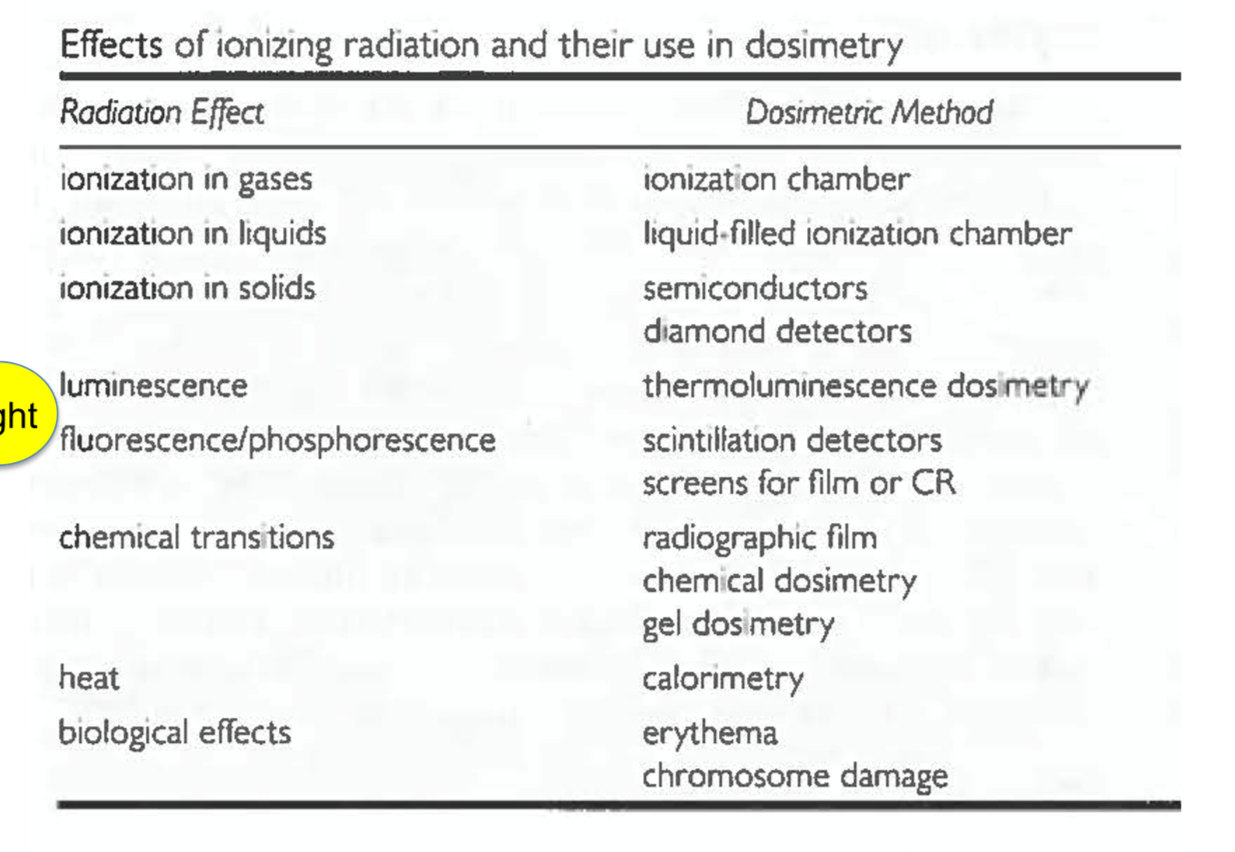
what are the two detection modes
pulsed mode and current mode
pulsed mode
A detection method where radiation events are registered as discrete pulses, allowing for the measurement of individual interactions with the detector.
issue with pulsed mode
It can lead to dead time, where the detector is unable to register subsequent events immediately after an initial detection, potentially causing losses in measurement accuracy.
current (continous/integrating) mode
A detection method where the output signal is proportional to the radiation intensity over a period of time, allowing for continuous measurement and integration of radiation events.
what are the three types of detectors (by type of information)
dosimeters
indictate net amount of energy deposited
counters
indicate number of interactions (GM counter)
spectrometers
provide information on energy distribution (NAI scintillators)
what 8 items describe what makes a good detector?
accuracy
precision
detection limit
measurement range
dose response
dose rate dependence
radiation quality response
spatial resolution
Accuracy
ability to indicate dose correctly
ABC: Accuracy = being correct
Precision
reproducibility of results under similar conditions
PQR: precision = question of reproducibility
Detection Limit
lowest dose detectable
measurement range
the range between lowest and highest detectable dose
dose response
should be linearly proportional to dose
or reproducible and predictable
dose rate dependence
should be independent of the dose rate applied
important for linacs
Radiation Quality Response Variation
the variability in detector response due to different types of radiation, affecting measurements and dosimetry.
Spatial resolution
should determine the dose in small volume
Formula for detection efficiency

ideal detection efficiency
1.0
what is intrinsic efficiency, and what is it’s formula
what percent of particles that reach detector are detected

what does intrinsic efficiency depend on?
type of detector
thickness
density
atomic number of material
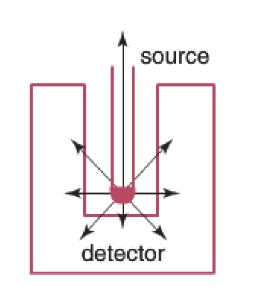
does film have good or bad intrinsic efficiency
Film has bad intrinsic efficiency due to its limited ability to detect particles compared to other types of detectors.
what is geometric efficiency, and it’s formula
the amount of particles reaching the detector compared to the number of particles emitted
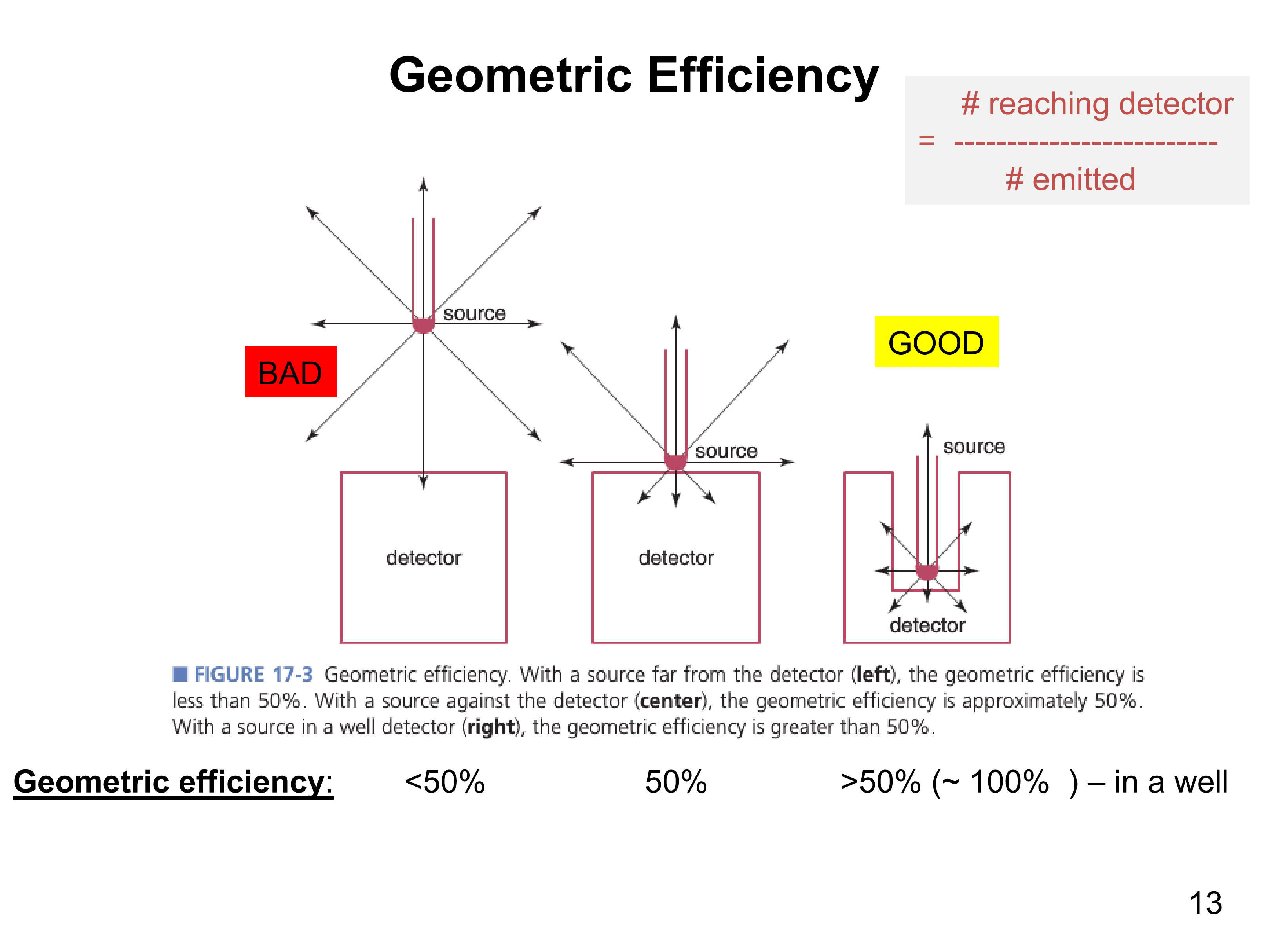
what radiation meters have the best geometric efficiency?
well detectors
what factor effect geometric efficiency
detector size and geometry (large more sensitive)
distance between radioactive material and detector
back-scatter towards detector
absorption of radiaiton before it enters detector
what is the formula for detection efficiency derive from geometric and intrinsic efficiency
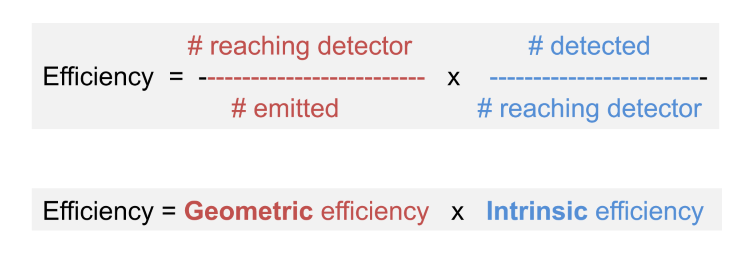
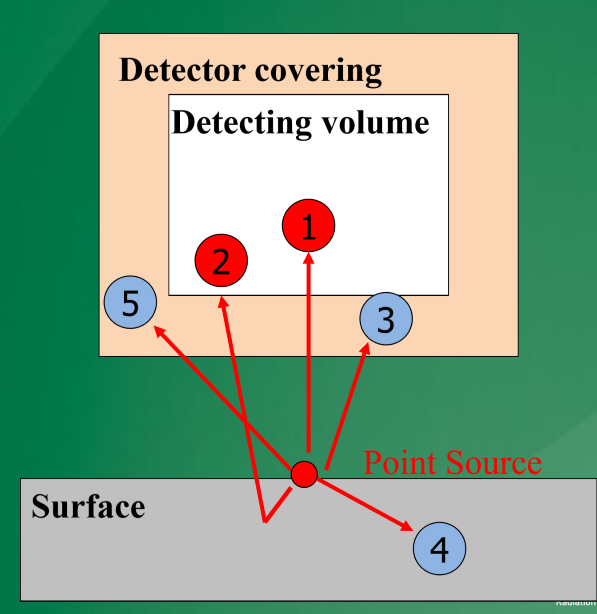
Radiation emission detection 1
direct incident on detector
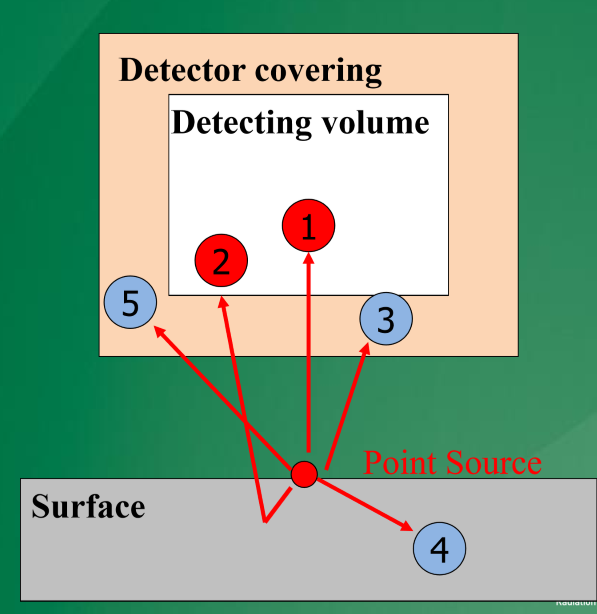
radiation emission detection 2
radiation back scatterd from surface onto detector
some energy lost
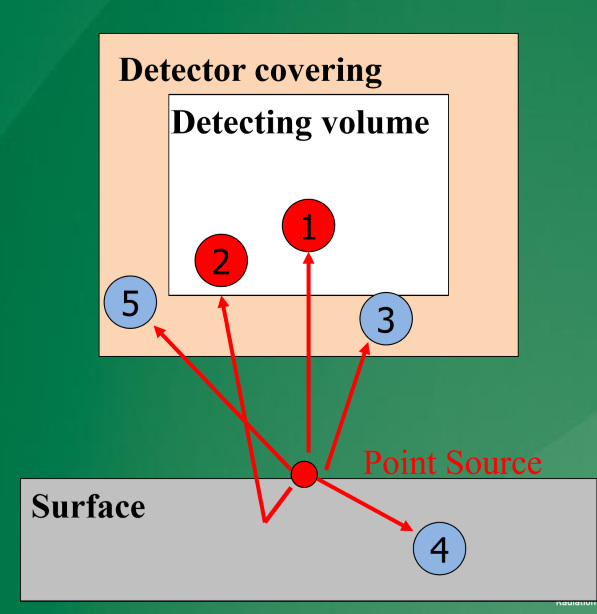
radiation emission miss 3
radiation absorbed by detector covering
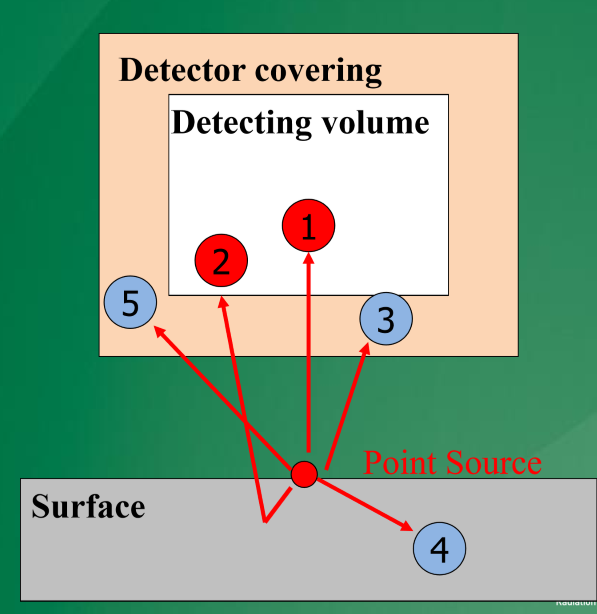
radiation emission miss 4
not incident on detector
radiation emission miss 5
if detector were closer, this would fall on the detected volume
simply, how do gas filled detectors work
volume of gas between two electrodes is ionized by radiation creating ion pairs
electrons attracted to anode
postive ions attracted to cathode
current generated
three types of ionization gas filled detectors
ionization chamber
geiger-muller counter
proportional counter
what is the main difference between the three types of detectors
the applied voltage between the electrodes
the more voltage applied, the more sensitive the detector
what is the shape of the electrode in ionization chambers
any shape, usually 2 parallel plates or cylinders
what is the shape of the electrode in GM and proportional counters
the anode is a thin wire
the behaviour of the gas detector depends on the ______
voltage applied
what happens when more voltage is applied
more ion pairs are generated, creating more current
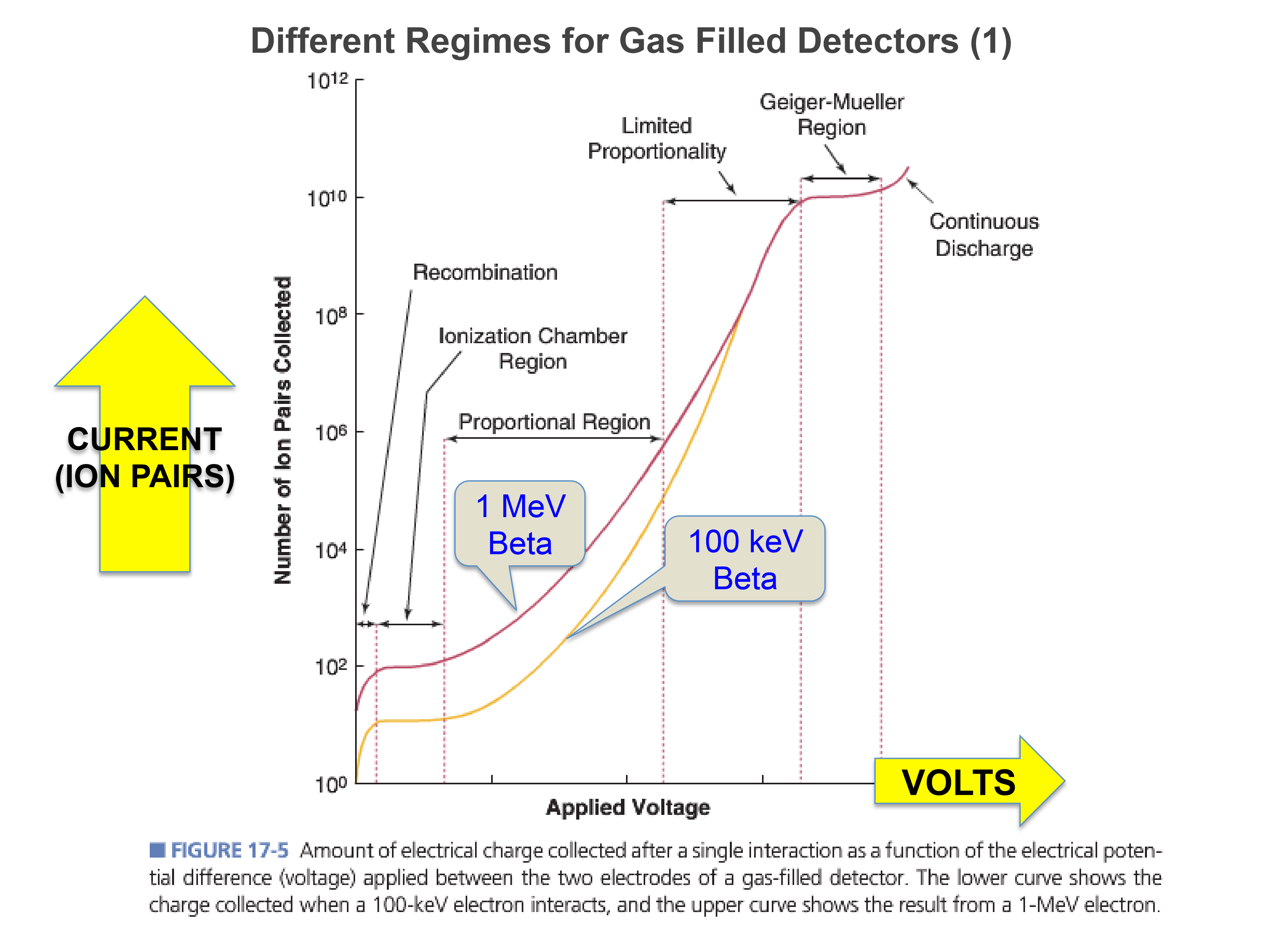

describe ion chambers in terms of the their applied voltage and current output
Ion chambers operate at a relatively low voltage, producing a current that is directly proportional to the amount of ionization in the gas, allowing for accurate measurement of radiation.
ion chambers are not very sensitive to radiation, but are good at measuring dose
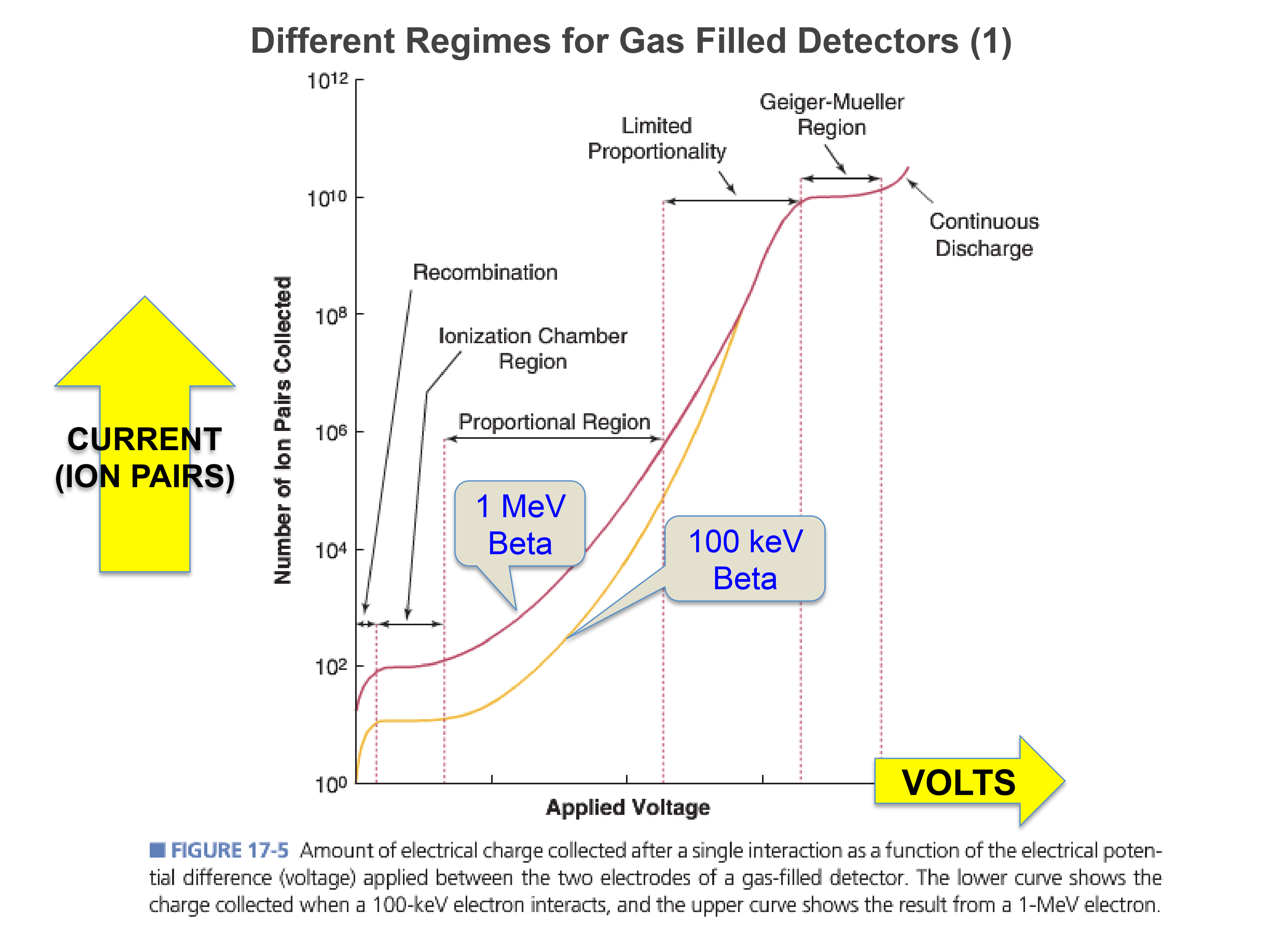
describe geiger-muller counters in terms of their applied voltage and current output
Geiger-Muller counters operate at a higher voltage compared to ion chambers, resulting in a larger current output for each ionizing event. They are highly sensitive to radiation and can detect low levels of ionizing radiation effectively.
have no sensitivity between the types of radiation, therefore they don’t measure dose well
voltages of recombination, ion chamber, proportional, and GM counters

describe the general idea of an ion chamber
An ion chamber is a radiation detector that measures ionizing radiation by collecting charge produced in a gas when radiation ionizes the gas molecules. It operates at low voltage, allowing for accurate dose measurements.
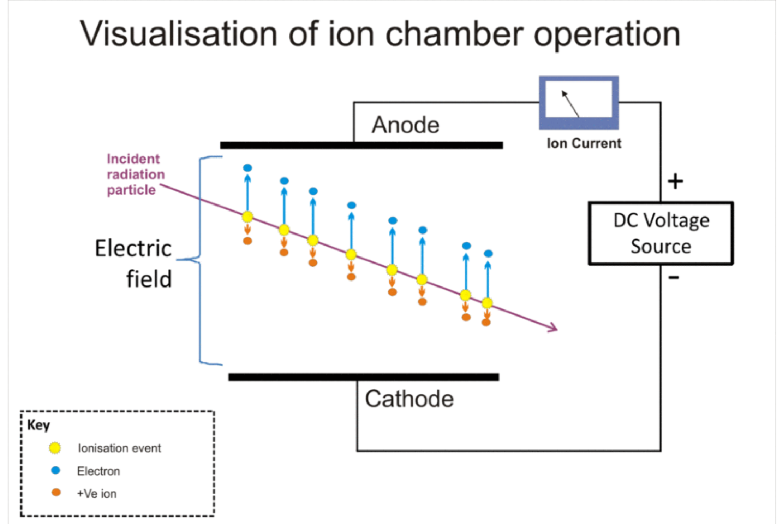
4 limitations of free-air ion chambers
3 MeV maximum due to range of electrons liberated in air
need to increase distance between plates to maintain EE
too large
inhomogenous E field and greater ion recombination
too delicate and bulky
corrections needed for:
air attenuation
recombination
temp, pressure, humidity (for air density)
scatter
what are thimble chambers, and how do they compare and contrast with ion chambers
Thimble chambers are a type of ion chamber designed for precise dose measurements, typically used in radiation therapy. They are smaller and more compact than traditional ion chambers, allowing for better spatial resolution, and they often have a more uniform electric field, resulting in reduced ion recombination effects.
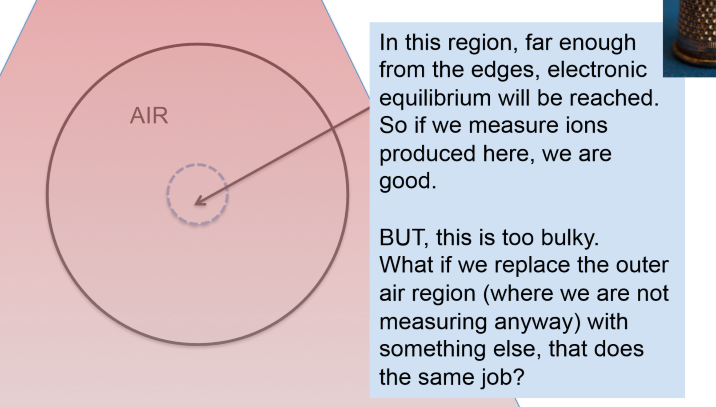
what is the outer air region replaced with in a thimble chamber?
thimble chamber walls whcih mass the known mass, volume, and Zeff of air
solid wall = air equivalent
how thick do thimble chamber walls have to be
thick enough to ensure electronic equilibrium but not so thick as to attenuate photon beam
what does the optimum thickness of the thimble chamber depend on?
the photon energy
100-250 kV, wall = 1 mm
1.25 MeV, wall = 5 mm
pros of thimble chambers
works well over range of energies
sensitive
well calibrated
minimal ion recomination losses (due to high enough voltage)
cons of thimble chambers
we get some leakage
how are farmer chambers different than thimble chambers
replace thimble wall with two layers
graphite outer layer and alumininum
good for all energies and have minimal leakage
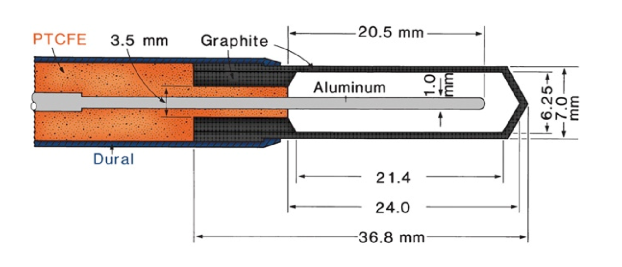
why is graphite used in the outer shell of farmer chambers
to reduce the K-edge effects of high Z-metals
what are well detectors used for?
testing radiopharmaceuticals in nuclear medicine
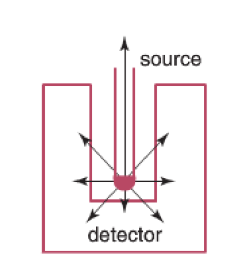
why are parallel plate ionization chambers used?
they are good to measure steep dose gradients as they are very thin
useful for LINAC energies (~MV)
not useful in water phantom
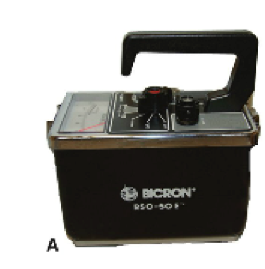
what type of gas filled detector are survey meters: ion chamber, proportional counter, or GM counter
ion chamber
so sensitive to different radiation types
what are the Geiger-Mueller counter avalanches?
The Geiger-Mueller avalanche occurs when ionizing radiation enters the tube, creating ion pairs. The applied high voltage accelerates electrons, triggering a chain reaction of secondary ionizations. This cascade effect, or avalanche, continues exponentially until the entire tube conducts, producing a large, easily detectable electrical pulse.
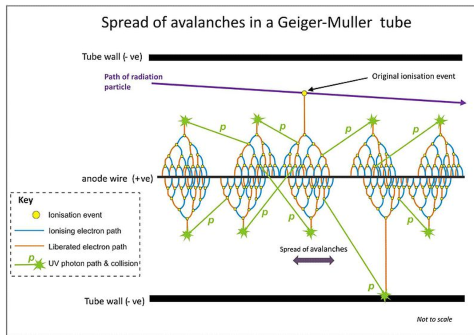
can GM counters detect the type of radiation
no, the avalanche in a Geiger-Mueller counter is so intense that it quenches any information about the initial energy of the radiation, making it useful only for detecting radiation presence, not its energy level.
lowest reading GM counter can measure compared to ion chamber
GM: 0.01 uSv/hr
ion: 1 uSv/hr
how do spectrometers work?
Spectrometers work by separating light or other electromagnetic radiation into its component wavelengths. A sample interacts with the radiation, and the spectrometer uses a prism, diffraction grating, or other optical element to disperse the light. Detectors then measure the intensity of each wavelength, producing a spectrum that provides information about the sample’s composition, structure, or properties.
can spectrometers provide information about the energy distribution (type) of radiation
Yes, spectrometers analyze the energy distribution of radiation by measuring wavelengths or particle energies, helping identify composition and radiation type.
what mode do spectrometers work on, pulsed or current mode
pulsed
as a result their may be dead time
how does the spectrometer tell you what kind of element you are being exposed to?
A spectrometer identifies elements by analyzing the unique spectral lines they emit or absorb. Each element has a distinct atomic structure, causing it to interact with radiation in a characteristic way. When excited (by heat, electricity, or radiation), atoms emit or absorb light at specific wavelengths, creating a unique spectral fingerprint. By comparing the detected spectrum to known reference spectra, the spectrometer determines which elements are present.
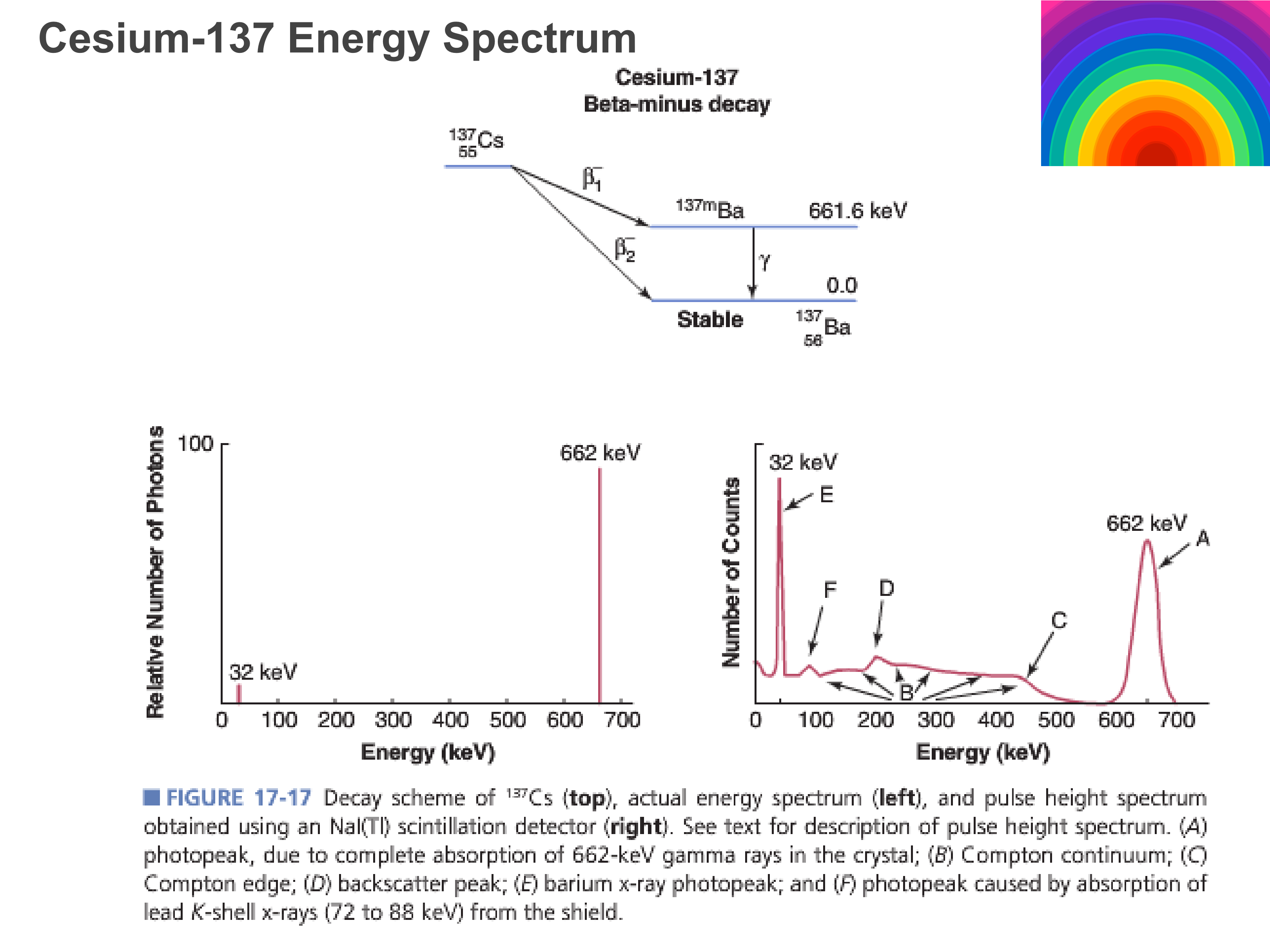
what are proportional counters, and how are they different from GM counters?
Proportional counters are gas-filled radiation detectors that measure both the presence and energy of ionizing radiation. When radiation ionizes the gas inside, the resulting electrons are accelerated by an electric field, causing a proportional avalanche—a controlled chain reaction of ionizations. Unlike Geiger-Mueller counters, the size of the resulting electrical pulse is proportional to the initial ionization energy, allowing for radiation energy measurement and particle identification.
what are proportional counters a mix of?
GM counters and ion chambers
still sensitive, but can also measure dose (but not as well as ion chamber)
cons of proportional counters
not very precise
need to be calibrated to particular x-ray energies
slow with extremly long dead time
run on pulsed mode